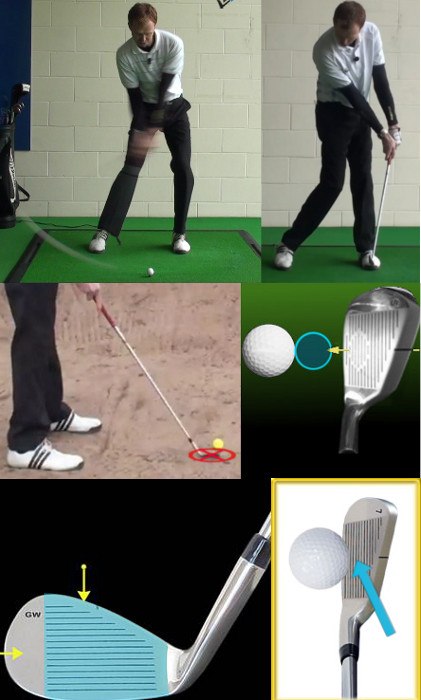You're Correct!

Golf fans ooh and ahh when a pro plays a shot that lands on the green and hits reverse, zipping backward as though pulled by a string. Its cool, alright. Its also double by the amateur golfer but only if hes got the right ball and the proper swing.
First, lets examine the ball.
Tour pros play with golf balls specifically designed to fly and land with lots of spin – sometimes called “tour,” “advanced” or “performance” models. Because these balls tend to cost non-pros a few yards off the tee (and several extra bucks in the shop), the majority of amateurs stick with “distance” balls, aka “value” or “recreational” models. Others go for the happy medium, buying “premium” balls designed for more spin than distance models, and more distance than tour brands.
(Confused? Check out our handy Free Golf Ball Fitting Guide and read our in-depth Golf Ball Tests and Reviews.)
Bottom line: If youre playing a distance ball (e.g., Pinnacle Gold, Callaway HEX Warbird), its not going to spin back no matter how you hit it. The better premium models (Srixon Q-STAR, Callaway HEX Hot Pro) give you a chance. But if youre bound and determined to see your wedge shots suck back, go with a high-end tour ball (Titleist Prov1, Bridgestone Tour B330).
A couple of other prerequisites for hitting the hard-spinning wedge: a clean clubface with sharp grooves, and a dry lie without too much grass beneath the ball.
OK, on to the swing.
When we talk about shots that spin backward, were usually talking about wedge shots. Longer, less lofted clubs generally wont produce enough spin to zip back, even for the pros.
The only way to generate ample backspin is to strike the ball with a descending blow. If and when youve mastered that critical fundamental, take a page from shotmaker supreme Lee Trevino, whose “burning wedge” wowed fans and peers alike. Its actually quite simple to execute with a gap or sand wedge:
- Set up normally, with your left (lead) foot a little open to the target line.
- Play the ball in the center of your stance, and stand slightly closer than normal.
- Choke up (grip down) an inch or so on the club.
Heres the key move: Approaching and exiting the impact zone, point the back of your left hand at the target, holding this position while continuing to rotate your right side through the shot.
The ball should fly lower than your usual wedge shot, with a slight fade and tons of backspin. Be careful, though. It may just suck back off the green.
A final word on the hard-spinning wedge: Its not a parlor trick. And its not always desirable. If youve got the skills (and the ball) to pull it off, look for the right situation – a pin cut close to a hazard with plenty of green behind the flag, for example. Used wisely, this specialty shot can be highly valuable.
Whether or not you ever achieve pro-level backspin, a wizardly wedge game can save you tons of strokes. Browse these links to the Web Tips section for some of our very best:
How Many Wedges Should You Carry?
Sorry Try Again! - See Explanation Below
The covers of distance balls are typically very firm, which limits spin-enhancing friction with the clubface. They simply dont provide the same action as premium and tour-level models. As for the sweeping swing, it doesnt compress the ball between clubface and turf. In other words, its a spin-killer.
Sorry Try Again! - See Explanation Below
To repeat, spinning the ball requires a downward strike that traps the ball between the ground and the club. A forward ball position shallows your angle of attack; youll take little if any divot and fail to compress the ball. An open clubface only exacerbates the issue.
Sorry Try Again! - See Explanation Below
This is a great idea if you want to take spin off the ball, because less clubhead speed and less loft equal less spin. The less club/easier swing method works well when hitting into the wind, or when playing to a green so severely sloped that you fear spinning the ball too far back.







